In October of 1995, the online fan website “Tokyo Cool” published the first, and one of the only English-language interviews with manga creator Taiyo Matsumoto. At some point in the last 13 years the whole website was taken offline, interview included. With a little help from webarchive.org I dug up as much of the original website as was left, including this interview and some bibliographical information. I then spent the last few months re-writing it into slightly more grammatical English, annotating it, and filling out and updating the bibliography. Why? Because Matsumoto is a real talent and I figure the more people are interested in him, the more people will buy the work, the more work we’ll get…! Enjoy!
INTERVIEW: TAIYO MATSUMOTO
By Kansai Takita
Conducted October 1995
Translated into English by Kansai Takita
English re-write by Christopher Butcher
Since when have clever writing and bold art styling become so appreciated? TAIYO MATSUMOTO emerged like a penetrating black hole of negative space into a sandstorm of tiny details. The brilliance of intense pitch-black darkness—like a photo-negative of the sun—assaults our eyes. The entire spectrum of Matsumoto’s world is focused in this interview, a sum of words.
## The Beginning of Taiyo Matsumoto’s Manga Career
TAKITA: Have you been drawing manga since childhood?
MATSUMOTO: I have always enjoyed drawing manga, but I was more of a soccer player as a child. I started drawing manga seriously while in University. When I was at Wako University, I saw an illustration in the book that introduces various clubs at school, and then joined ‘Comic Study Group’. Up to that point, I was definitely a physical type. When I asked the other club members when we started practicing, I was told there was no such thing as practice! At that time, I had absolutely no knowledge of how to create comics—not even about toning. I had to be taught the basics, like not drawing on both sides of the paper.
TAKITA: You made your debut in Comic Morning Magazine [with the series STRAIGHT].
MATSUMOTO: There was a special edition of “Comic Morning†called “Afternoon†which was just being issued. It was in “Afternoon†where my first work appeared. I was a university student then.
TAKITA: Who were your favorite comic artists at the time?
MATSUMOTO: I was a fan of Comic Morning contributor Seiki Tsuchida, I decided to apply there with my work because of him. 1
## Taiyo Matsumoto’s Cousin, Santa Inoue
TAKITA: Did you start drawing comics at the same time as your cousin, manga artist Santa Inoue? 2
MATSUMOTO: Santa was born in France, and I used to bully him because his Japanese was terrible. I think it was into our late teens when we became close friends. He was very bright. He has been contributing his manga to Shueisha and other publishers since his early teens, he started very early. His style is not “tardy” and very sharp, you know. It may be because Santa was born in France that his comic has no “wabi-sabi” (an expression derived from the Sadoh, Japanese tea ceremony, implying simple tranquility). 3
TAKITA: Do you regard him as your rival?
MATSUMOTO: I do have a sense of friendly rivalry with him… I wouldn’t want to do anything unseemly.
## Moving from STRAIGHT to ZERO.
TAKITA: Next you moved onto the “Big Comic Spirits” magazine from “Comic Morning”.
MATSUMOTO: I had a lot of freedom working with “Big Comic Spirits.” I wrote my manga ZERO as I was asked to do a drama featuring a boxing story.
TAKITA: You made a dramatic change in your drawing style between STRAIGHT and ZERO.
MATSUMOTO: I was covering the Paris-Dakar Rally when I was 22. I had little interest in the Rally itself and spent a lot of time at bookstores. The drastic change in my drawing may have been the result of the comics I came across in the French bookstores. 4
TAKITA: Does that mean that you were influenced by French comics artists like Moebius and Enkil Bilal?
MATSUMOTO: Yes, I was. The number of really great comics artists in France were fewer than I had anticipated, but those who were great were exceptionally marvelous. They had a tremendous impact on my work.
TAKITA: Did you work out the story of ZERO before you began drawing it? Traditionally a boxing manga portrays the character growing up and coming of age, but that isn’t the case with ZERO.
MATSUMOTO: Yes, I had my story prepared. ZERO starts with a 30 year old boxing champion as the main character. At first, the publisher was against beginning the story that way.
TAKITA: In ZERO your line had changed, but the fundamental story resembles that of STRAIGHT.
MATSUMOTO: Yes, that’s true. With ZERO, I had completed what I could not accomplish in STRAIGHT. Although STRAIGHT was originally about a 40 year-old relief pitcher, I was asked to change him to a 19 year-old relief pitcher because I was young myself then. I had a specific desire to draw a story about a middle-aged man.
## Background on Matsumoto’s works BLUE SPRING and HANA-OTOKO (A Boy Meets A Papa and Baseball).
TAKITA: Your manga BLUE SPRING feels new, in the sense that it observes punk kids from an objective point of view, normally comics about punks are done by punk artists themselves. Was your high school like the one depicted in BLUE SPRING?
MATSUMOTO: Well, my high school has been closed down. The students really only became rough after it had been decided that the school was to be closed. I love drawing teenage punks, they became my dear friends and I was a fan of them. Although I felt that the story in BLUE SPRING “The Family Restaurant Is Our Paradise!†was pretty well done, I had written “This Is Bad†5 to complete the book. I was amazed by how I could rapidly change my work. I thought I had an unbiased attitude to my subjects, but I found it impossible to be impassive. At the end I was forcing myself to draw punks objectively and the consequence is “This Is Bad.â€
TAKITA: “Revolver” is based on an original story by Carib Marley (a writer and a great fan of Bob Marley!). How did you two collaborate on the work?
MATSUMOTO: He had finished the original story as one piece and kindly said that I could cook the material as I wished. I was a fan of Carib Marley, and it happened that we had the same editor. “Revolver†was the very first work I did based on someone else’s story.
TAKITA: Your manga HANA-OTOKO is set in Shonan, a seaside area.
MATSUMOTO: I used to live in Sagami-Ohno. But I had a feeling, while I was strolling through the Shonan area, it might just be the right environment for creating HANA-OTOKO, so I had moved to Fujisawa. It was pretty lonesome living by myself, so I asked Kazunari Eifuku 5a and Santa Inoue to move there with me.
TAKITA: HANA-OTOKO resembles Kei Nemoto’s manga NATURAL. 6
MATSUMOTO: I found out about that afterwards. Santa is a fan of Nemoto’s works and seems to be on good terms with Nemoto. I am a fan of Yoshikazu Ebisu’s 7 works, particularly TEACHERS IN HELL and NO MORE THINKING. I think they’re great manga.
## TEKKON KINKREET and Action Comics
TAKITA: You are particular about the movements of a human body. Do you like action comics?
MATSUMOTO: I like comics with action especially in a serialized comic. Specifically, I prefer to draw sports stories where the action can be depicted more naturally, as compared to something like a gangster action comic. Another reason I prefer to draw sports comics is that I enjoy drawing the little details that belong to sports, like a catcher’s mitt or the number on a player’s back in a baseball manga.
TAKITA: How about a soccer comic?
MATSUMOTO: Doing a soccer comic is hard. 22 players need to appear in one game. I would need 20 volumes to do a soccer comic, but I feel most comfortable with work that’s about three volumes long.
TAKITA: Did you pick the setting for TEKKON KINKREET as the near-future because you had action comics in mind for this particular work?
MATSUMOTO: It would have been more effective to see a boy running down a building wall in animation, I couldn’t achieve the effect I had envisioned in a single drawing. 8
TAKITA: Even though it’s a single drawing, your expression of movement is so rich. You use techniques like abbreviating dialogue and very specific framing and composition in TEKKON KINKREET, did you do that all on instinct?
MATSUMOTO: If I try to write all of the dialogue, the story would be too long. Even when I read other people’s comics, I’m inclined to skip some of lines of dialogue. So I abbreviate it as much as possible in my work.
##The Vector Of Creation
TAKITA: What are you interested in creating next?
MATSUMOTO: The next material that I am interested in is table tennis. I’d like to do a high school version of Shinsen Gumi in Ryotaro Shima’s “Burning Sword” (a historical novel where a group of samurai called Shinsen Gumi have risen to protect the Emperor toward the end of Edo Period). 9
TAKITA: There is already Monoru Furutani’s GO! INA JUNIOR HIGH TABLE TENNIS CLUB!
MATSUMOTO: Whenever I mention that I want to do a table tennis manga next, I’m always reminded of that. What I’m going to do is a story with a main character who is a genius. I’ve been researching and the series will appear serially in “Big Comic Spirits†magazine.
TAKITA: It may sound trite, but why have you chosen to become a comic artist and not a novelist or a film director?
MATSUMOTO: When I was deciding what I should do for life, there were so many comic artists that I had incredible respect for, like Minetaro Mochizuki 10, Seiki Tsuchida and Katsuhiro Otomo 11. Under the circumstances, I could think of no other way to tell stories than becoming a comic artist.
TAKITA: Mochizuki’s FLUTTER GOLDFISH is really funny.
MATSUMOTO: When I read that, I was relieved that I don’t have to draw women. Many people had said that my weak point was that I couldn’t draw women in the same way that, if I were a pitcher, I couldn’t throw a curve ball.
TAKITA: TEKKON KINKREET has become a play directed by Makoto Sato in a black tent. What do you think of the play? 12
MATSUMOTO: I had expected more changes from the original, but on the contrary, it was loyal to the original work and most of lines used were exactly the same as those in the actual comics. Having seen that play, I wanted to write a play myself.
## The Future
TAKITA: What do you think of multimedia, personal computers, and so forth?
MATSUMOTO: Currently, I am working on a CD-ROM 13. At first, I was asked to make a CD-ROM of TEKKON KINKREET, but I did not want the comic which was meant to be read as in two-page spreads to be conformed to a style where every panel had to be clicked and read one-at-a-time. So I am doing an original work for a CD-ROM. I still don’t have a feel for it, but I’m flattered that many young people have an interest in my work.
TAKITA: The art book 100 and manga NIHON NO KYODAI (Brotherhood of Japan) are your newest works. Could you tell us about your future plans?
MATSUMOTO: Manga creator Mr. Aihara 14 has already done a ninja comic. I’d like to do a ninja comic myself, using vivid contrast without toning, possibly in a monthly or bi-monthly serial. The world of ninja is so cruel and dirty, yet it has a strong aesthetic. When I am a little older with more drawing ability, I would like to draw that world of wabi-sabi. 15
##A message for the readers
TAKITA: Would you like to leave a message for the readers?
MATSUMOTO: Please do not believe in comic artists’ words. I think comics are like fake magic. To keep itself entertaining, it creates a secret device, and we are not creating comics out of supernatural power. Sometimes there are readers who have false idea about drawing comics are about using supernatural power. (^^;;)
TAKITA: Indeed, that may happen, as a manga leaves the hands of an artist once it is published and starts to walk by itself. Thank you for joining us today.
END
October,1995
INTERVIEWED by TAKITA KANSEI
The original interview may be available online by clicking this link.
—
END NOTES
1. Seiki Tsuchida has not yet been published in English. For more on him though, check out these links.
Links on Seiki Tsuchida:
A fun post on his series “KING OF EDITORSâ€: http://community.livejournal.com/mangacast/514236.html
Biography of Seiki Tsuchida: http://users.skynet.be/mangaguide/au1959.html.
2. Santa Inoue is best known in North America for his series TOKYO TRIBES, published in English by Tokyopop. A sensational Japanese gangster fantasy, the series has legions of dedicated fans in Japan, and has led to an anime, fashion lines, and many other licensed goods. Unfortunately it looks as though TT has been cancelled by the publisher, with only six of 11+ volumes translated. Santa Inoue is no relation to manga-ka Takehiko Inoue, author of VAGABOND.
Links on Santa Inoue:
Santastic! The official Santa Inoue store: http://www.santa.co.jp/
Tokyopop Publisher Stu Levy interviews Inoue in a video interview: http://youtube.com/watch?v=85XTK8kJUwA (Apparently this is just part 1 of an 8 part interview, but I can’t find parts 2-7 anywhere. Sigh. Tokyopop.)
3. This description of “wabi-sabi†comes from the original interview, however the actual idea is much more complex and nuanced. For more on “wabi-sabiâ€, visit http://en.wikipedia.org/wiki/Wabi-sabi.]
4. I feel it important to note that Matsumoto created the action tour-de-force NO.5 (Number 5) in the early 2000s, which has a very deliberate and acknowledged tip-of-the-hat to the comics of Moebius and Enki Bilal.
5. In the original Japanese version of BLUE SPRING, the story referred to here is called “Oh, I Give Upâ€, and is the last story in the book.
5a. Kazunari Eifuku: I couldn’t find any information on this person, save a thank-you credit in Usumaru (Short Cuts) Furuya’s SUICIDE CIRCLE. It is interesting to note however, that Matsumoto would later go on to work with a fellow named Issei Eifuku, and Issei Eifuku seems only to be credited with being the writer on Matsumoto’s newest work, TAKEMITSU ZAMURAI.
6. I can find no record of this manga anywhere. However, the artist that they seem to be referring to here is likely “Takashi Nemoto†who is sometimes mistakenly referred to as “Kei Nemoto.†Nemoto is a seminal, influential figure in underground comics in Japan. His first published work in English appeared in the now hard-to-find collection COMICS UNDERGROUND JAPAN, and his first major work, MONSTER MEN BUREIKO LULLABY, will be published in English by PictureBox Inc. in Fall 2008.
Links on Takashi Nemoto:
The official English Takashi Nemoto website: http://www011.upp.so-net.ne.jp/TOKUSYUMANGA/text/genre14.htm
Information page for PictureBox Inc.: http://www.pictureboxinc.com/product/id/306/
7. Ebisu Yoshikazu’s work is generally untranslated in North America, except for a short story in COMICS UNDERGROUND JAPAN. However, a panel of his work graces the front cover to Frederk L. Schodt’s seminal book on manga, Dreamland Japan, and an appreciation of the artist appears in that book.
8. Obviously, this interview was conducted far before TEKKON KINKREET was animated. The animated version of TEKKON KINKREET was released in 2007 by Sony Pictures.
9. The work described here would eventually become Matsumoto’s biggest hit, the five-volume manga series PING PONG. The PING PONG manga spawned a live-action movie that has been released in North America by Viz Pictures Releasing. The manga has not yet been translated for North America, but is available in scanlations.
10. Minetaro Mochizuki is the author of DRAGON HEAD, published in English by Tokyopop, and it is quite good. Mochizuki is better-known in Japan for his comedy series FLUTTER GOLDFISH, though, which is untranslated.
11. Katsuhiro Otomo is the creator of the smash-hit manga and anime AKIRA. AKIRA manga was until-recently available from Dark Horse Comics, and the AKIRA animated film is available on DVD from Sony Pictures. In addition, Otomo’s STEAMBOY and MEMORIES animated films are available from Son Pictures, and his manga DOMU was until-recently available from Dark Horse Books.
12. Sorry folks, I couldn’t find any more info on this stage adaptation, or even much about what a Black Tent play is. HOWEVER! It looks like Matsumoto actually DID write a play. I found a book on Amazon Japan that seems to be a combination of the comic that the play is based on and the complete script for the play. It’s called, and I quote, “Mezasu hikari no aru saki / or Mono, moshikuha, paradiseâ€. He also created the script for an original black tent play in comics form, which became the graphic novel HANA. Both plays have been performed in front of an audience, and published as books.
13. CD-ROM? No idea. I couldn’t find any info on this.
14. “Mr. Aihara†here may actually refer to Koji Aihara, the author of EVEN A MONKEY CAN DRAW MANGA (released in English by Viz, out of print), as Aihara did create a well-regarded Ninja comic.
15. “I’d like to do a ninja comic myself, using vivid contrast without toning, possibly in a monthly or bi-monthly serial.†Matsumoto did adopt a very edgy and high-contrast style later in his career, and he’s using it to illustrate his current manga series TAKEMITSU ZAMURAI, with author Issei Eifuku. It’s very interesting.
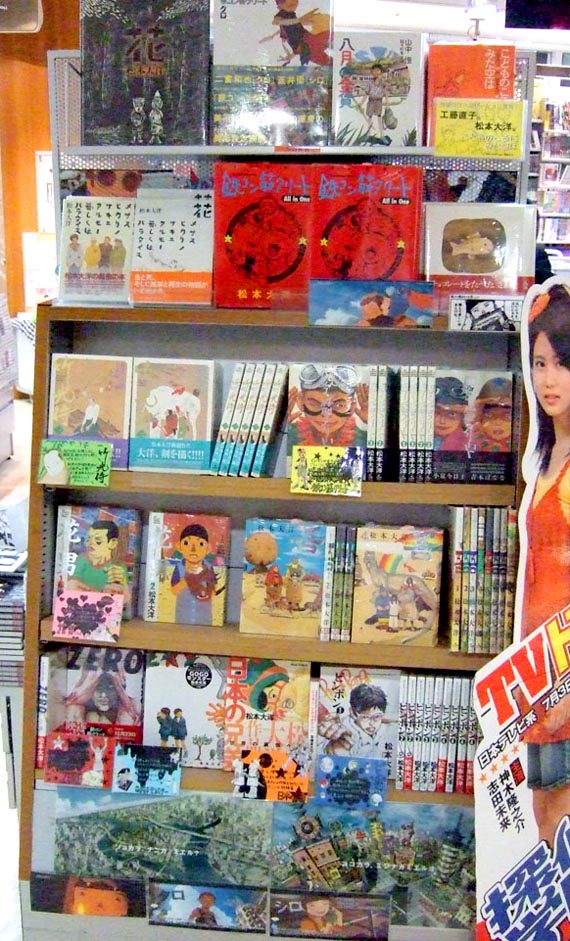
Japanese book display featuring the work of Taiyo Matsumoto. Photo by Christopher Butcher.
—
BIBLIOGRAPHY OF JAPANESE WORKS BY TAIYO MATSUMOTO
I’ve compiled as thorough a bibliography of Japanese language releases by Taiyo Matsumoto as one can without a thorough grasp of the Japanese language. I’ve also tried to find cover images for each entry, and made specific note of if and where these books are available in English, by hook… or by crook. I should also note that Matsumoto has begun illustrating book covers and interiors for various prose stories, and a search of his name on Amazon Japan will bring up 3-5 books not listed below. In general, he has just provided cover illustrations for these work, and so I haven’t included them here (they’re real pretty though…).

STRAIGHT Volume 1
Publisher: Kodansha, January 1989
English Availability: No
420 yen
STRAIGHT Volume 2
Publisher: Kondansha, December 1989
English Availability: No
430 Yen

ZERO Volume 1 (New Edition)
Publisher: Shogakukan, May 1991 (Reissued September 95)
ISBN-13: 978-4091847355
English Availability: No
900 Yen
Zero Volume 2 (New Edition)
Publisher: Shogakukan, August 1991 (Reissued September 95)
ISBN-13: 978-4091847348
English Availability: No
900 Yen
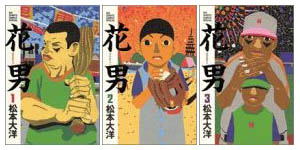
Hana Otoko (A Boy Meet A Papa And Baseball) Volume 1
Publisher: Shogakukan, May 1992 (reissued October 1998)
ISBN-13: 978-4091857316
English Availability: Scanlations, http://www.mangascreener.com/
900 Yen
Hana Otoko (A Boy Meet A Papa And Baseball) Volume 2
Publisher: Shogakukan, August 1992 (reissued October 1998)
ISBN-13: 978-4091857323
English Availability: Scanlations, http://www.mangascreener.com/
900 Yen
Hana Otoko (A Boy Meet A Papa And Baseball) Volume 3
Publisher: Shogakukan, October 1992 (reissued October 1998)
ISBN-13: 978-4091857330
English Availability: Scanlations, http://www.mangascreener.com/
900 Yen

Blue Spring (Aoi Haru)
Publisher: Shogakukan, May 1993 (Reissued December 1998)
ISBN-13: 978-4091857347
English Availability: Print Edition, Viz, http://www.viz.com
English Availability: Film Adaptation, Artsmagic, http://www.artsmagicdvd.com/home/index.html
920 Yen
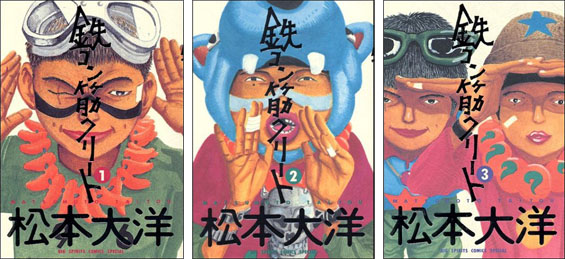

Tekkon Kinkreet Volume 1
Publisher: Shogakukan, March 1994
English Availability: Print Edition (as Black & White Volume 1), Viz, Out of Print
English Availability: Film Adaptation, Sony Pictures, http://www.sonypictures.com/homevideo/tekkonkinkreet/
850 Yen
Tekkon Kinkreet Volume 2
Publisher: Shogakukan, May 1994
ISBN-13: 978-4091847324
English Availability: Print Edition (as Black & White Volume 2), Viz, Out of Print
English Availability: Film Adaptation, Sony Pictures, http://www.sonypictures.com/homevideo/tekkonkinkreet/
850 Yen
Tekkon Kinkreet Volume 3
Publisher: Shogakukan, July 1994
ISBN-13: 978-4091847331
English Availability: Print Edition (as Black & White Volume 3), Viz, Out of Print
English Availability: Film Adaptation, Sony Pictures, http://www.sonypictures.com/homevideo/tekkonkinkreet/
850 Yen
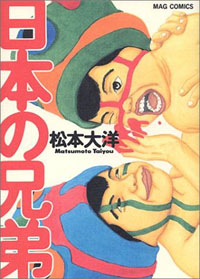
Brothers of Japan (Nippon No Kyoudai)
Publisher: Magazine House, October 1995
Hardcover
ISBN-13: 978-4838707508
English Availability: No
1,100 Yen

100
Publisher: Shogakukan, November 1995
100 Pages, Artbook, Hardcover, Oversized, Full Colour
ISBN-13: 978-4091997210
English Availability: No
2,500 Yen

Ping Pong Volume 1
Publisher: Shogakukan, June 1996
ISBN-13: 978-4091847362
English Availability: Scanlations, http://www.kefi.org/
English Availability: Film Adaptation, Viz, http://www.pingpong-movie.net/
900 Yen
Ping Pong Volume 2
Publisher: Shogakukan, November 1996
ISBN-13: 978-4091847379
English Availability: Scanlations, http://www.kefi.org/
English Availability: Film Adaptation, Viz, http://www.pingpong-movie.net/
900 Yen
Ping Pong Volume 3
Publisher: Shogakukan, February 1997
ISBN-13: 978-4091847386
English Availability: Scanlations, http://www.kefi.org/
English Availability: Film Adaptation, Viz, http://www.pingpong-movie.net/
900 Yen
Ping Pong Volume 4
Publisher: Shogakukan, June 1997
ISBN-13: 978-4091847393
English Availability: Scanlations, http://www.kefi.org/
English Availability: Film Adaptation, Viz, http://www.pingpong-movie.net/
900 Yen
Ping Pong Volume 5
Publisher: Shogakukan, August 1997
ISBN-13: 978-4091847409
English Availability: Scanlations, http://www.kefi.org/
English Availability: Film Adaptation, Viz, http://www.pingpong-movie.net/
900 Yen

101
Publisher: Shogakukan, May 1999
100 Pages, Artbook, Oversized, Hardcover, Full Colour
ISBN-13: 978-4091847324
English Availability: No
2,500 Yen

Mezasu hikari no aru saki or Mono, moshikuha, paradise
Publisher: Freestyle, May 2000
165 Pages, Hardcover, Text only (play)
ISBN-13: 978-4939138010
English Availability: No
About: This play was written by Taiyo Matsumoto to be performed in black tent.
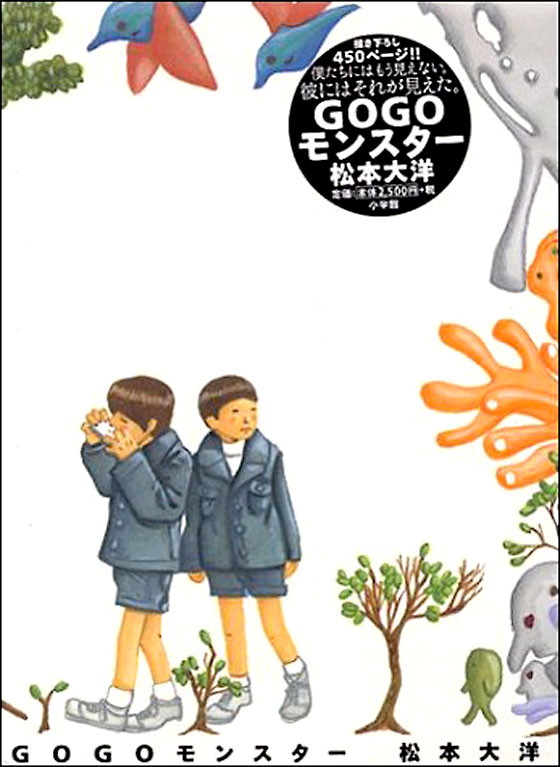
GOGO MONSTER
Publisher: Shogakukan, November 2000
455 Pages, Hardcover, Slipcase
ISBN-13: 978-4091793416
English Availability: No
2,625 Yen
Edit: In February 2009 Viz Media announced that they would be doing an all-in-one edition of GO GO MONSTER, to be released November 2009 for $24.95. Format is unkown at time of posting.
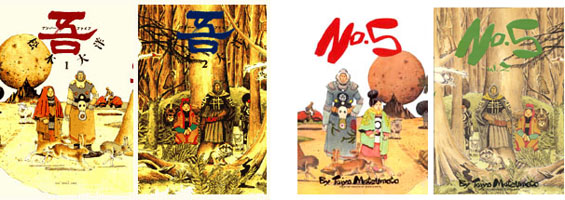
No. 5 Volume 1
Publisher: Shogakukan, November 2001
146 Pages, Oversized
ISBN-13: 978-4091882011
English Availability: Print Edition, Viz, Out of Print
860 Yen
No. 5 Volume 2
Publisher: Shogakukan, May 2002
138 Pages, Oversized
ISBN-13: 978-4091882028
English Availability: Print Edition, Viz, Out of Print
860 Yen
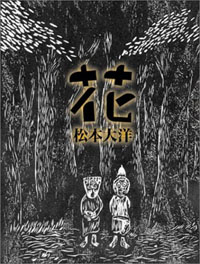
Hana
Publisher: Freestyle, December 2002
80 Pages, Oversized, Hardcover, Dust Jacket
ISBN-13: 978-4939138096
English Availability: No
1,680 Yen
ABOUT: Matsumoto created this script for a black tent theatre performance as a penciled comic story, and then revised it into a full length 80 page graphic novella.

No. 5 Volume 3
Publisher: Shogakukan, March 2003
Oversized
ISBN-13: 978-4091882035
English Availability: No
860 Yen
No. 5 Volume 4
Publisher: Shogakukan, August 2003
128 Pages, Oversized
ISBN-13: 978-4091882042
English Availability: No
860 Yen
No. 5 Volume 5
Publisher: Shogakukan, January 2004
138 Pages, Oversized
ISBN-13: 978-4091882059
English Availability: No
860 Yen
No. 5 Volume 6
Publisher: Shogakukan, June 2004
134 Pages, Oversized, Dust Jacket
ISBN-13: 978-4091882066
English Availability: No
860 Yen
No. 5 Volume 7
Publisher: Shogakukan, November 2004
? Pages, Oversized, Dust Jacket
ISBN-13: 978-4091882073
English Availability: No
860 Yen
No. 5 Volume 8
Publisher: Shogakukan, February 2005
? Pages, Oversized
ISBN-13: 978-4091882080
English Availability: No
860 Yen
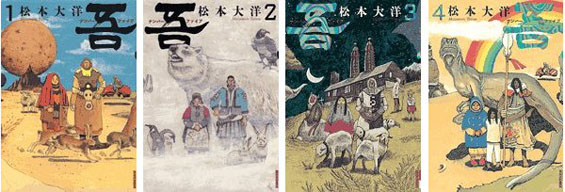
No. 5 Omnibus Edition Volume 1
Publisher: Shogakukan, November 2005
Collects Volumes 1 & 2 of the original edition
ISBN-13: 978-4091886118
English Availability: No
1,100 Yen
No. 5 Omnibus Edition Volume 2
Publisher: Shogakukan, November 2005
Collects Volumes 3 & 4 of the original edition
ISBN-13: 978-4091886125
English Availability: No
1,000 Yen
No. 5 Omnibus Edition Volume 3
Publisher: Shogakukan, December 2005
Collects volumes 5 and 6 of the original series
ISBN-13: 978-4091883049
English Availability: No
1,000 Yen
No. 5 Omnibus Edition Volume 4
Publisher, Shogakukan, December 2005
Collects volumes 7 and 8 of the original series
ISBN-13: 978-4091857323
English Availability: No
1,100 Yen
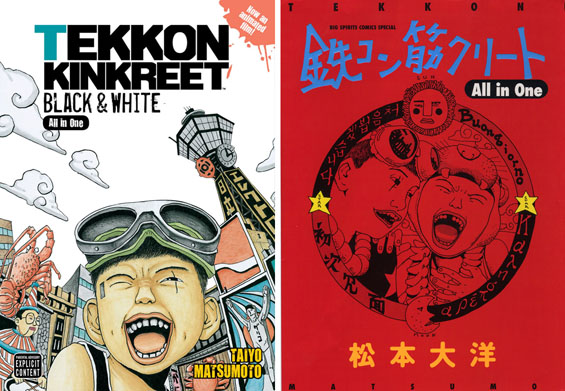
Tekkon Kinkreet All-In-One Edition
Publisher: Shogakukan, December 2006
611 Pages, Oversized, Dust Jacket
ISBN-13: 978-4091810335
English Availability: Print Edition, Viz, http://www.viz.com
English Availability: Film Adaptation, Sony Pictures, http://www.sonypictures.com/homevideo/tekkonkinkreet/
1,600 Yen

Takemitsu Zamurai Volume 1
Publisher: Shogakukan, December 2006
ISBN-13: 978-4091810342
English Availability: No
900 Yen
Takemitsu Zamurai Volume 2
Publisher: Shogakukan, May 2007
ISBN-13: 978-4091813206
English Availability: No
900 Yen
Takemitsu Zamurai Volume 3
Publisher: Shogakukan, October 2007
ISBN-13: 978-4091815880
English Availability: No
900 Yen
Takemitsu Zamurai Volume 4
Publisher: Shogakukan, March 2008
ISBN-13: 978-4091818485
English Availability: No
900 Yen
—
Thanks to Abhay Khosla for looking this over and for the kind words of support. And if you’re Kansai Takita, thank you very much for conducting this interview in the first place. I’m sharing it here in the same spirit that you originally conducted and posted it; so that people will read good manga. That said, it’s quite clearly your work, so feel free to tell me to take it down if it isn’t to your liking.
Thanks for reading,
– Christopher


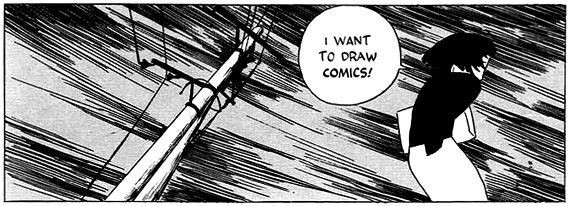
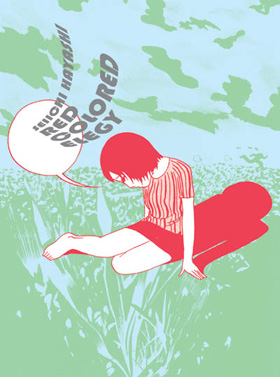 I haven’t linked to Adam Stephanides site Completely Futile for a while, but
I haven’t linked to Adam Stephanides site Completely Futile for a while, but 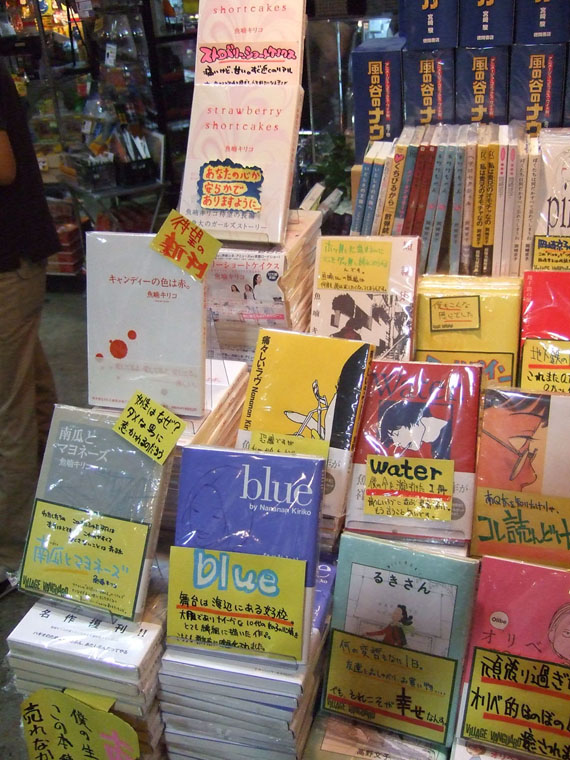 So just what do we want the manga industry to look like, anyway? I mentioned at the end of that last post that I let my own hopes and fears inform any predictions I might make… Prescribing the future of the industry, any industry is something of a sucker bet, something could happen tomorrow to send that industry wildly off course. Besides, predicting the future is best left to the people managing your retirement portfolio, I’d much rather describe what I would like to see, rather than what I think will happen.
So just what do we want the manga industry to look like, anyway? I mentioned at the end of that last post that I let my own hopes and fears inform any predictions I might make… Prescribing the future of the industry, any industry is something of a sucker bet, something could happen tomorrow to send that industry wildly off course. Besides, predicting the future is best left to the people managing your retirement portfolio, I’d much rather describe what I would like to see, rather than what I think will happen. So what do I want the manga industry to look like then? I think that Drawn + Quarterly has a good idea, with one prestige-format (meaning a format with actual prestige, like a hardcover book with lovely thick paper and a beautiful design, and not those flimsy little 48 page superhero comics with a spine) release of “mature manga” per year. If there were 3 or 4 publishers doing that, each with a nicely designed manga release per season (spring/fall), that’d be maybe 8-10 wonderful books per year, which I think that the market could bear, and that’d be lovely. Currently the number of high-end manga releases in a given year is about half of that, which accounts for the loud noises I make when they manage to drop. Add in the serialization of older seinen and adult books from publishers like Vertical, Viz, and Tokyopop? I think I’d be okay with that.
So what do I want the manga industry to look like then? I think that Drawn + Quarterly has a good idea, with one prestige-format (meaning a format with actual prestige, like a hardcover book with lovely thick paper and a beautiful design, and not those flimsy little 48 page superhero comics with a spine) release of “mature manga” per year. If there were 3 or 4 publishers doing that, each with a nicely designed manga release per season (spring/fall), that’d be maybe 8-10 wonderful books per year, which I think that the market could bear, and that’d be lovely. Currently the number of high-end manga releases in a given year is about half of that, which accounts for the loud noises I make when they manage to drop. Add in the serialization of older seinen and adult books from publishers like Vertical, Viz, and Tokyopop? I think I’d be okay with that.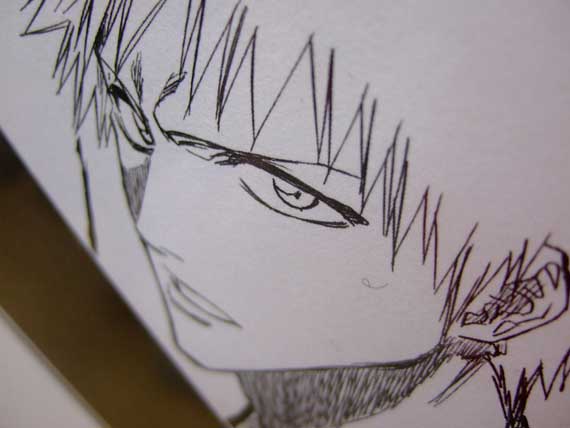


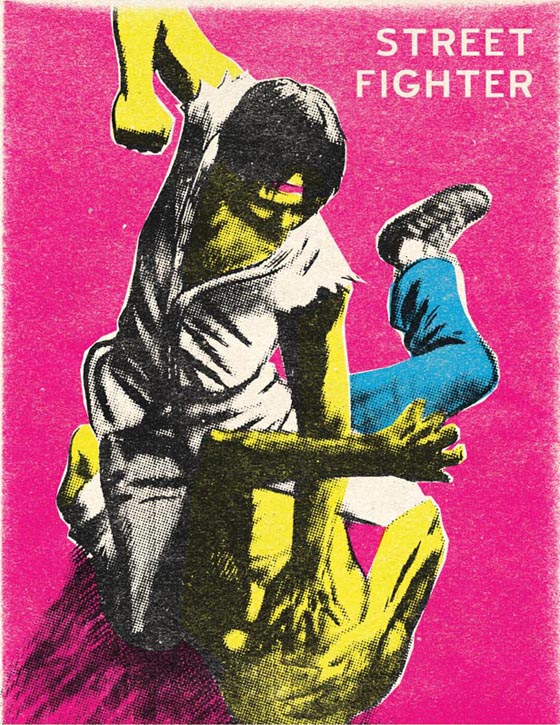


















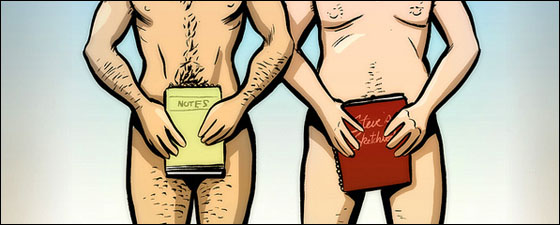
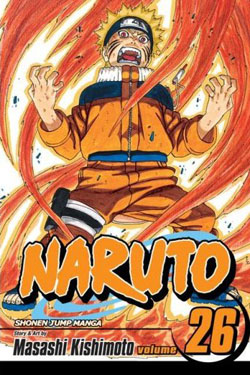 No one knows how the manga market is going to shake out in the next few years, I think that much can be taken as fact. Everyone’s got ideas, informed by both their desires and their fears, but I’ve talked to a lot of people and no one has the magic bullet. There’s a lot going on in North America–war, recession, the cost of gasoline–all of them are big question marks for every retail business. I’m not an economist, I can’t even begin to address how decentralized suburban environments and a lack of public transit infrastructure are going to affect the sales of the serialized adventures of manga heroes and heroines at the local box store. But luckily there’s enough weird shit happening inside the industry itself that I can talk about that instead.
No one knows how the manga market is going to shake out in the next few years, I think that much can be taken as fact. Everyone’s got ideas, informed by both their desires and their fears, but I’ve talked to a lot of people and no one has the magic bullet. There’s a lot going on in North America–war, recession, the cost of gasoline–all of them are big question marks for every retail business. I’m not an economist, I can’t even begin to address how decentralized suburban environments and a lack of public transit infrastructure are going to affect the sales of the serialized adventures of manga heroes and heroines at the local box store. But luckily there’s enough weird shit happening inside the industry itself that I can talk about that instead.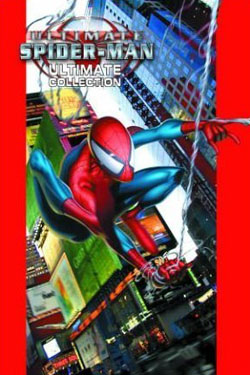 I can’t help but look at this situation from the perspective of a lifelong comics fan who never had his parents throw out his comic collection–who worked in the drinking and the fucking around alongside the adventures of The Transformers, The Uncanny X-Men, The Invisibles, and eventually The Socially Awkward Characters of Adrian Tomine. Superhero comics offer an escape, are modern mythology, and are no more or less immature than professional sports fandom, say the converts. Mike Manley calls them all “babymen” though, fully grown though emotionally immature men who simultaneously crave change and tradition, the illusion of life-altering adventures set against the steady hum of conformity. In short, the Simpsons episodes before and after Barney gave up drinking, because those ones where he’s just got a coffee look fucking weird in syndication. Whatever side of the debate you come down on in the emotional maturity of superhero fans argument, one need only look at the books themselves to see the overwhelming conservatism, tradition, and homogeneity in the monthly superhero fantasy land. It’s a genre where most everyone draws and writes very similar stories, and that’s what makes it surprising when those same fans make the same accusations about manga.
I can’t help but look at this situation from the perspective of a lifelong comics fan who never had his parents throw out his comic collection–who worked in the drinking and the fucking around alongside the adventures of The Transformers, The Uncanny X-Men, The Invisibles, and eventually The Socially Awkward Characters of Adrian Tomine. Superhero comics offer an escape, are modern mythology, and are no more or less immature than professional sports fandom, say the converts. Mike Manley calls them all “babymen” though, fully grown though emotionally immature men who simultaneously crave change and tradition, the illusion of life-altering adventures set against the steady hum of conformity. In short, the Simpsons episodes before and after Barney gave up drinking, because those ones where he’s just got a coffee look fucking weird in syndication. Whatever side of the debate you come down on in the emotional maturity of superhero fans argument, one need only look at the books themselves to see the overwhelming conservatism, tradition, and homogeneity in the monthly superhero fantasy land. It’s a genre where most everyone draws and writes very similar stories, and that’s what makes it surprising when those same fans make the same accusations about manga.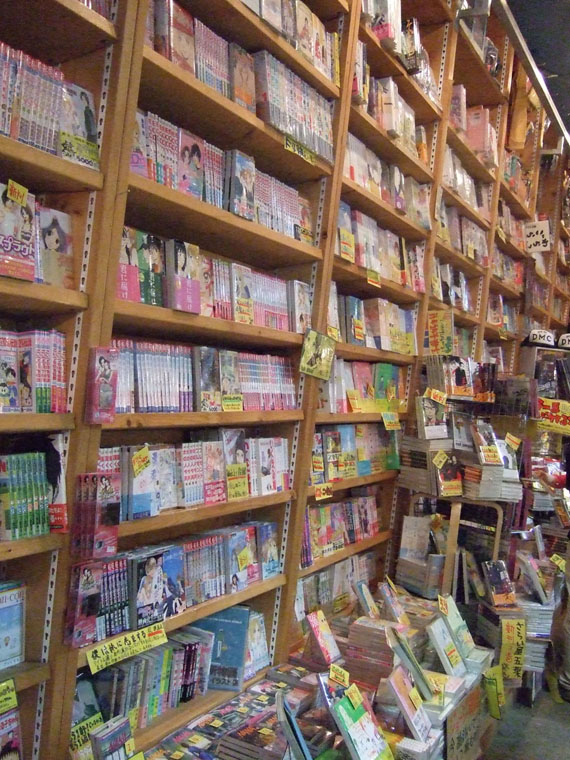
 Unfortunately, and despite the best wishes of myself and many of my friends, the answers are not as simple as “more josei manga! more seinen manga! more adult manga!” for a number of reasons. The big one is the differing cultural mores; that the west has all kinds of completely insane hangups about nudity and sexuality, let alone the combination of those things with violence, and while not every manga intended for the 18-and-over set is full of those things, the popular ones are.
Unfortunately, and despite the best wishes of myself and many of my friends, the answers are not as simple as “more josei manga! more seinen manga! more adult manga!” for a number of reasons. The big one is the differing cultural mores; that the west has all kinds of completely insane hangups about nudity and sexuality, let alone the combination of those things with violence, and while not every manga intended for the 18-and-over set is full of those things, the popular ones are. If you look at all of the manga pubs and their output, it becomes clear that each has their own strategy when it comes to attracting the mature reader and keeping them there. DMP offers a bevvy of Yaoi material in vanilla and kinky flavours, releasing just enough 16+ material into the market to keep the girls (and occasional guy) salivating for their 18th birthdays, when they can get to the mature stuff. In fact, the yaoi market might just be the most diverse in terms of age and reach, and its growth from being an ultra-niche fandom into a sizable demographic worth paying monetary attention to has been rapid, and worth noting. While no one in the niche is getting rich, most pubs are keeping their heads above water and behaving ethically. Of particular note is Yaoi Press, a publisher that’s managed to keep the lights on and a steady stream of product released, and they’ve done it without licensing even one book from overseas. It’s a company for fans by fans (a fan who happens to be a pretty savvy businesswoman) that has largely managed to bypass the biases of fandom against “fake manga” and put out quality product that sells to girls and women. That’s pretty impressive, and perhaps a business plan to follow. Over the past few years Tokyopop seems to have recognized the value of broadening their demographic reach, perhaps fearing that they were about to lose the shonen and shoujo markets to their competitors. Their Original English Language Manga efforts (OEL/World Manga) showed a broad, broad reach across age, gender, and race, but the problem with trying to be all things to all people is how often you end up bein’ nuthin’ for no one. Even the most ardent Tokyopop supporter would define their output over the last three or four years as “unfocused.” One wonders what their publishing program would have looked like with stronger lines, with stand-alone graphic novels, with an experienced editorial staff better known for commissioning and developing original work? Maybe we’ll get an opportunity, Tokyopop seems to be refining their line now… but I’ll probably talk about that next time out.
If you look at all of the manga pubs and their output, it becomes clear that each has their own strategy when it comes to attracting the mature reader and keeping them there. DMP offers a bevvy of Yaoi material in vanilla and kinky flavours, releasing just enough 16+ material into the market to keep the girls (and occasional guy) salivating for their 18th birthdays, when they can get to the mature stuff. In fact, the yaoi market might just be the most diverse in terms of age and reach, and its growth from being an ultra-niche fandom into a sizable demographic worth paying monetary attention to has been rapid, and worth noting. While no one in the niche is getting rich, most pubs are keeping their heads above water and behaving ethically. Of particular note is Yaoi Press, a publisher that’s managed to keep the lights on and a steady stream of product released, and they’ve done it without licensing even one book from overseas. It’s a company for fans by fans (a fan who happens to be a pretty savvy businesswoman) that has largely managed to bypass the biases of fandom against “fake manga” and put out quality product that sells to girls and women. That’s pretty impressive, and perhaps a business plan to follow. Over the past few years Tokyopop seems to have recognized the value of broadening their demographic reach, perhaps fearing that they were about to lose the shonen and shoujo markets to their competitors. Their Original English Language Manga efforts (OEL/World Manga) showed a broad, broad reach across age, gender, and race, but the problem with trying to be all things to all people is how often you end up bein’ nuthin’ for no one. Even the most ardent Tokyopop supporter would define their output over the last three or four years as “unfocused.” One wonders what their publishing program would have looked like with stronger lines, with stand-alone graphic novels, with an experienced editorial staff better known for commissioning and developing original work? Maybe we’ll get an opportunity, Tokyopop seems to be refining their line now… but I’ll probably talk about that next time out. Getting back to publisher strategies for the aging manga market, I feel like Dark Horse was in there first, and has been in their longest, when it comes to manga material for older readers. Unfortunately I feel like that was as a result of their focus on publishing manga that would appeal to the existing North American superhero readership base, a backlist comprised mainly of fantasy and science fiction manga, with a bunch of samurai thrown in for good measure. The current boom in popularity of serialized sci-fi and fantasy on television would seemingly make titles like Eden, Blood+, and Gantz sure-fire hits, but unfortunately the sales on Dark Horse’s seinen (young men) manga seem to have flagged. Eden seems to be under a constant death-watch, and Dark Horse’s horror manga initiative seems to have suffered an untimely end. Even the series that I personally thought had the most potential, Hiroki Endo’s Tanpenshu short story collections, were largely ignored in the market. I kind of have to wonder how many series you can cancel mid-stream before buyers simply stop buying everything, and wait for the serialization to be completed before they pick up a book? That can’t be a healthy strategy for anyone involved, and I hope that whatever steps Dark Horse decides to take with their manga line, they see them through to completion for their own sake…
Getting back to publisher strategies for the aging manga market, I feel like Dark Horse was in there first, and has been in their longest, when it comes to manga material for older readers. Unfortunately I feel like that was as a result of their focus on publishing manga that would appeal to the existing North American superhero readership base, a backlist comprised mainly of fantasy and science fiction manga, with a bunch of samurai thrown in for good measure. The current boom in popularity of serialized sci-fi and fantasy on television would seemingly make titles like Eden, Blood+, and Gantz sure-fire hits, but unfortunately the sales on Dark Horse’s seinen (young men) manga seem to have flagged. Eden seems to be under a constant death-watch, and Dark Horse’s horror manga initiative seems to have suffered an untimely end. Even the series that I personally thought had the most potential, Hiroki Endo’s Tanpenshu short story collections, were largely ignored in the market. I kind of have to wonder how many series you can cancel mid-stream before buyers simply stop buying everything, and wait for the serialization to be completed before they pick up a book? That can’t be a healthy strategy for anyone involved, and I hope that whatever steps Dark Horse decides to take with their manga line, they see them through to completion for their own sake… I have to say that, going forward, it seems like manga for an adult general audience is going to come from Viz. The Viz Signature line seems to be comprised entirely of things I want to read, and on a fairly regular basis. Unfortunately with the end of Drifting Classroom and Golgo 13 and nothing immediately launched to replace them, the regular output in the line is going to be comprised of just Naoki Urasawa’s Monster and Takehiko Inoue’s REAL through this Christmas (and the re-launch of the Vagabond series which will hopefully catch on in a big way)… But the idea behind it is a solid one, the radical notion of presenting works not just using classifications of age or audience but quality is pretty radical in mainstream publishing. That a company is willing to step up and say “This is really good stuff that we’re publishing here, take a look at it,” whilst also trying not to say that anything else they’re publishing is necessarily… bad… heh. It’s kind of neat. That and I was lucky enough to receive an early copy of the first volume of Viz’s edition of REAL and it’s fucking gorgeous, and feels great in the hand. French flaps! Larger size! It looks and feels different than manga for kids, which (alongside the recent releases Tekkon Kinkreet and Cat-Eyed Boy) is a very important step for the publisher. I also think it’s interesting that in talking to Marc Weidenbaum about Viz’s Original English Language publishing initiative, a big part of that conversation was that OEL could very well be what readers go to “next”. With Tokyopop titles like Dramacon, Bizenghast, and Princess Ai all doing well in the market, and being books with a Japanese ‘look’ but with North American cultural mores in mind, this really could be the future. Whatever they end up with will be worth watching.
I have to say that, going forward, it seems like manga for an adult general audience is going to come from Viz. The Viz Signature line seems to be comprised entirely of things I want to read, and on a fairly regular basis. Unfortunately with the end of Drifting Classroom and Golgo 13 and nothing immediately launched to replace them, the regular output in the line is going to be comprised of just Naoki Urasawa’s Monster and Takehiko Inoue’s REAL through this Christmas (and the re-launch of the Vagabond series which will hopefully catch on in a big way)… But the idea behind it is a solid one, the radical notion of presenting works not just using classifications of age or audience but quality is pretty radical in mainstream publishing. That a company is willing to step up and say “This is really good stuff that we’re publishing here, take a look at it,” whilst also trying not to say that anything else they’re publishing is necessarily… bad… heh. It’s kind of neat. That and I was lucky enough to receive an early copy of the first volume of Viz’s edition of REAL and it’s fucking gorgeous, and feels great in the hand. French flaps! Larger size! It looks and feels different than manga for kids, which (alongside the recent releases Tekkon Kinkreet and Cat-Eyed Boy) is a very important step for the publisher. I also think it’s interesting that in talking to Marc Weidenbaum about Viz’s Original English Language publishing initiative, a big part of that conversation was that OEL could very well be what readers go to “next”. With Tokyopop titles like Dramacon, Bizenghast, and Princess Ai all doing well in the market, and being books with a Japanese ‘look’ but with North American cultural mores in mind, this really could be the future. Whatever they end up with will be worth watching.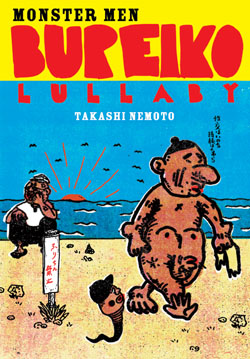 That said, as the market stands right now my heart belongs to the Alternative and Art Comix publishers who are publishing challenging, entertaining, and unique manga. Drawn + Quarterly’s productions of Yoshihiro Tatsumi’s work really are top-of-the-line thanks to copious extras and a beautiful hardcover production, as is their most recent release, the 70s manga that’s equal parts revolutionary student movement and French art film, Red Colored Elegy. Their recently announced 800+ page autobiography of Tatsumi is shaping up to be the book of 2009, and may even succeed to really grab a mainstream audience where his fiction works have not, as North American book buyers tend to embrace autobiography and memoir in comics format quite easily. Of course, Last Gasp’s own manga titles, including the ground-breaking Barefoot Gen and the soon-to-be-released underground manga title TOKYO ZOMBIE are must-buys. I think Last Gasp will be announcing a new Junko Mizuno manga soon too (San Diego!) and given her standing in the fine art and vinyl toy world, that will have a real possibility of breaking through. And PictureBox Inc. seems entirely committed to publishing works that are capital-I Important and then trying to create a market for them, so their upcoming release of Monstermen Bureiko Lullaby should be, if nothing else, very interesting. Oh, and everything Fanfare/Ponent-Mon publishes is worth buying too, every single one. I wish they could get their scheduling and distribution under control, and I think those factors will keep them an ultra-niche publisher until they get sorted out, but Disappearance Diary alone should win them an award entitled “Best gift to a North American manga fan”. Their upcoming release of Jiro Taniguchi’s “Faraway Neighborhood,” should it get the distribution and attention it deserves, could very-well be their breakout book. Keep an eye out for it.
That said, as the market stands right now my heart belongs to the Alternative and Art Comix publishers who are publishing challenging, entertaining, and unique manga. Drawn + Quarterly’s productions of Yoshihiro Tatsumi’s work really are top-of-the-line thanks to copious extras and a beautiful hardcover production, as is their most recent release, the 70s manga that’s equal parts revolutionary student movement and French art film, Red Colored Elegy. Their recently announced 800+ page autobiography of Tatsumi is shaping up to be the book of 2009, and may even succeed to really grab a mainstream audience where his fiction works have not, as North American book buyers tend to embrace autobiography and memoir in comics format quite easily. Of course, Last Gasp’s own manga titles, including the ground-breaking Barefoot Gen and the soon-to-be-released underground manga title TOKYO ZOMBIE are must-buys. I think Last Gasp will be announcing a new Junko Mizuno manga soon too (San Diego!) and given her standing in the fine art and vinyl toy world, that will have a real possibility of breaking through. And PictureBox Inc. seems entirely committed to publishing works that are capital-I Important and then trying to create a market for them, so their upcoming release of Monstermen Bureiko Lullaby should be, if nothing else, very interesting. Oh, and everything Fanfare/Ponent-Mon publishes is worth buying too, every single one. I wish they could get their scheduling and distribution under control, and I think those factors will keep them an ultra-niche publisher until they get sorted out, but Disappearance Diary alone should win them an award entitled “Best gift to a North American manga fan”. Their upcoming release of Jiro Taniguchi’s “Faraway Neighborhood,” should it get the distribution and attention it deserves, could very-well be their breakout book. Keep an eye out for it.
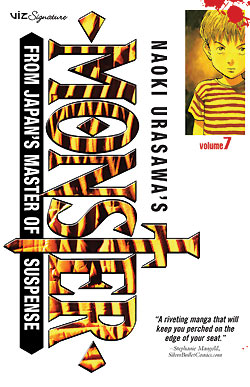 If I were a publisher, I’d be looking at my options. I’ve thought for a while that the graphic novel market in general, and manga in particular, has outgrown the “graphic novel section” of the bookstore. While about 80% of the manga being published could go to the same audience of 13-18 year olds (and those who read books for 13-18 year olds) there are a good number of books–and customers–who are likely tired of stepping over teenagers sprawled on the floor in the manga section. I think publishers working to develop newer and more diverse sections in bookstores is more important than ever, and there’s already been some headway made in developing separately stocked–and separately purchased–graphic novel sections in the children’s areas. Walk into most chain bookstores and you’re much more likely to find Pokemon: Diamond and Pearl Adventures Volume 1 across the aisle from the picture books rather than next to Naruto (although in an ideal world it might be cross-racked). Now, and here’s the trick, we need a grown-up graphic novel section, not only for the excellent (and future) D+Q, Picturebox, and Last Gasp offerings but so that the only difference between Battle Royale and Boys over Flowers isn’t some easily removed shrink-wrap. The industry is getting younger–the buzz words at the New York Comic Con were COMICS and FOR and KIDS–but it’s also getting older too, and older customers would like a different shopping experience than trying to find the latest Tatsumi or Inoue manga jammed in-between Ultimate Spider-Man and Naruto whilst simultaneously trying to avoid the outstretched gangly limbs of sullen teens thoroughly immersed in the Universe of the Four Gods.
If I were a publisher, I’d be looking at my options. I’ve thought for a while that the graphic novel market in general, and manga in particular, has outgrown the “graphic novel section” of the bookstore. While about 80% of the manga being published could go to the same audience of 13-18 year olds (and those who read books for 13-18 year olds) there are a good number of books–and customers–who are likely tired of stepping over teenagers sprawled on the floor in the manga section. I think publishers working to develop newer and more diverse sections in bookstores is more important than ever, and there’s already been some headway made in developing separately stocked–and separately purchased–graphic novel sections in the children’s areas. Walk into most chain bookstores and you’re much more likely to find Pokemon: Diamond and Pearl Adventures Volume 1 across the aisle from the picture books rather than next to Naruto (although in an ideal world it might be cross-racked). Now, and here’s the trick, we need a grown-up graphic novel section, not only for the excellent (and future) D+Q, Picturebox, and Last Gasp offerings but so that the only difference between Battle Royale and Boys over Flowers isn’t some easily removed shrink-wrap. The industry is getting younger–the buzz words at the New York Comic Con were COMICS and FOR and KIDS–but it’s also getting older too, and older customers would like a different shopping experience than trying to find the latest Tatsumi or Inoue manga jammed in-between Ultimate Spider-Man and Naruto whilst simultaneously trying to avoid the outstretched gangly limbs of sullen teens thoroughly immersed in the Universe of the Four Gods.